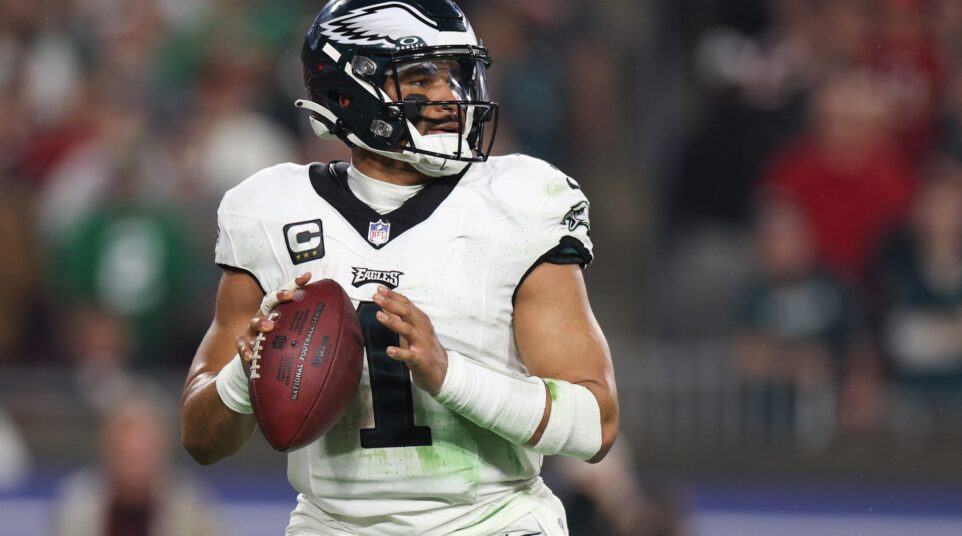
Republicans Buy Sneakers, Too: A Review of Clay Travis' New Book
“With your help, I still believe,” writes Clay Travis at the conclusion of Republicans Buy Sneakers, Too, “sports can still be the one place we go in America where […] we can all be equal.” Travis, whose book is subtitled How the Left is Ruining Sports with Politics, argues that athletics and liberal politics have become destructively intertwined.
In 272 pages, Travis makes an occasionally compelling, frequently repetitive case for either the permanent divorce or more balanced presentation of sports and politics. The book would have benefited from a sharper-eyed editor who could eliminate some of the redundancies and remedy the litany of comma splices that appear throughout the text.
But the readers of Travis’ website, Outkick the Coverage, aren’t drawn to the author because he’s an eloquent sports journalist in the vein of David Halberstam; they read Travis because he’s a persuasive and entertaining writer. He also sticks to an accessible style. I’m by no means a fast reader, but I was able to finish Republicans Buy Sneakers, Too in the space of a weekend.
Travis begins by detailing the events of his confrontational appearance on CNN, in which he boldly declared his belief in the First Amendment and boobs. The resulting controversy almost cost Travis his spot on Fox Sports Radio.
I found it a bit difficult to sympathize with a person who summoned his own social media mob to submarine the hiring of Greg Schiano at the University of Tennessee, but the point Travis makes about performative internet outrage is well taken. Too often, such displays are nothing more than empty virtue-signalling exercises. Travis bolsters his point by citing the bizarre Twitter expedition into Donte DiVincenzo’s social media posts as a young teenager, in which he quoted a Meek Mill rap lyric that featured the n-word.
Moreover, the attention that is generated by mass displays of anger only empowers a provocateur like Travis. He wears the resulting stigma quite literally like a badge of honor. Just check out the cover of his book, which proudly trumpets Travis’ bans from CNN and ESPN.
Travis proceeds to a discussion of the protests at the University of Missouri in 2015, an event that he describes as his “red pill” moment. The term has its origins in The Matrix movie franchise, and it has been co-opted by alt-right internet conservatives to describe their collective epiphany that liberals control the discourse.
In the ensuing chapters, Travis forcefully argues that the “sports media” has allowed the apolitical levees protecting athletics to be overrun. Travis theorizes that sports journalists have aired athletes’ political opinions in order to preserve their access and to amplify views with which they agree, but cannot openly proclaim.
It’s an argument that could use many more examples than the author provides. Travis instead relies on a limited series of anecdotes to support his position. When he does turn to statistics, the results are not as clear as he would like his readers to believe.
For instance, Travis touts a survey conducted by The Big Lead to validate his claims about the pervasiveness of liberalism in the sports media world. According to the data, only 4% of those polled voted for Trump in 2016. By comparison, more than 80% voted for Hillary Clinton.
Looks bad, right? Well, what Travis does not divulge to his audience is the fact that only 51 people responded to the survey. It’s difficult to determine the scientific authenticity of the results, but the author of The Big Lead piece does acknowledge the possibility that response bias might have affected the results.
Travis also misinterprets the data. He writes: “Only 6 percent of the respondents in this survey even identified as Republicans; fully 94 percent of all sports media surveyed by The Big Lead weren’t willing to even consider voting for a Republican.” That’s an irresponsible logical leap to attempt, and it is contradicted by other data The Big Lead compiled. 20 percent of respondents preferred either Marco Rubio or John Kasich, both Republicans, as their top choice in 2016. Moreover, 13.7% voted for Mitt Romney in 2012.
The errors of omission are starker when Travis presents the presidential donation patterns at ESPN. “Hillary Clinton received received financial support from 217 different employees,” Travis asserts, while “Donald Trump received financial support from 2, totaling $102.”
ESPN employs 8,000 people, according to The New York Times. This means that roughly 2.7% of the network’s employees donated money to the Clinton campaign. If Travis wants to make sweeping generalizations about the political posture of ESPN based on the behavior of a fraction of its workforce, he can feel free to do so. I like the First Amendment, too, after all. But he should know that his misapplication of the statistics is ignorant at best and disingenuous at worst.
That’s not to say Travis is wrong to suspect that a liberal bias lurks in the sports media universe. I just think he’s unwilling to explore his suspicion with an open mind and make a cogent presentation.
Travis is willing to dive only so far in the sea of intellectual curiosity before swimming back to the surface. He rightly highlights the popularity of Michael Jordan, whose apolitical posture in the ’90s maximized his market value. However, he fails to consider why entertainers like Jordan had to avoid the third rail of race in order to attain crossover appeal.
Travis correctly calls out the kid-gloves treatment of LeBron James, who has never experienced a confrontational interview over his political stances, but does not address the elephant in the room that might explain LeBron’s foray into politics: the rise of Donald Trump, who has inspired devotion and derision in nearly equal measure; and the police shootings of Tamir Rice in Cleveland and John Crawford in Beavercreek, Ohio, among others.
The author does a thorough job of challenging the logic of Colin Kaepernick’s national anthem protest, but gives short shrift to the role the president has played in exploiting the action for political gain.
Furthermore, Travis holds up the declining ratings of football games as evidence that the politicization of sports has alienated conservative viewers, but, aside from an anecdote about his uncle, fails to prove the connection. He also conveniently fails to address the fact that networks continue to pay top dollar for the rights to NFL games and the NFL still attracts an unrivaled number of viewers.
Finally, there is an inherent dissonance to this book that I had difficulty shaking. Despite all of Travis’ grumbling about the alleged leftward tilt of the sports media, one cannot ignore the fact that Travis benefits more from perpetuating the perception of liberal bias than seeking to end it.
There is nothing wrong with advancing arguments that seek to pull the security blanket of victimization from the arms of liberals, but it’s a bad look when you seek its warmth for yourself:
So despite selling more copies than many of the books on @nytimes bestseller list they left my book off. I bet if I’d had Kaepernick dunking on Trump on the cover I would have made it. Buy your copies here: https://t.co/ud4qRCuVYY
— Clay Travis (@ClayTravis) October 3, 2018
https://twitter.com/broadsidebooks/status/1047500442907885569
Republicans buy sneakers, and they’re also apparently susceptible to the same transparent appeals to grievance from ideological hucksters looking to cash in on the culture wars.
Travis put it better than I ever could: “there’s a business in dividing us through political media now, and sports is getting drawn into that national balkanization.”
I can’t give Travis too much grief for trying to capitalize on the polarization. I just wish he wrote a better book.
Rating: 2 out of 5 stars
Book details –
Clay Travis, Republicans Buy Sneakers, Too: How the Left is Ruining Sports With Politics
272 pages
Published by Broadside Books





